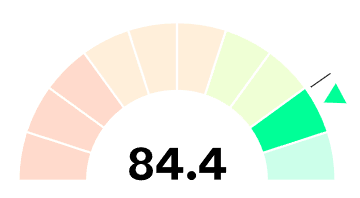We are delighted to announce the publication of a first of its kind digital experience report. In collaboration with the leading delivery experience platform, Sorted, we researched human responses to fashion retail ecommerce. To do this, we created a neuroscience benchmark, a unique measurement index for retail ecommerce customer experience (CX). Read on to find out more.
Why did we create a neuroscience benchmark?
First of all, with the help of the agile and dynamic team at Sorted, we were asked to find a way to measure ecommerce CX. With the majority of customer journey materials only published in the last 16 years, the field is relatively new. With a range of neuroscientific services on offer, Think Beyond knows that CX is something that many businesses struggle to measure. In short, many tend to measure the result, such as customer satisfaction scores, rather than in-flight CX. Furthermore, it is mostly measured via surveys after the event, which are not always accurate (see below).
Secondly, as a business focused on delivery experience (DX), with powerful solutions across the full post-purchase journey, Sorted are passionate about 5-star DX. Their products enable a better online checkout experience, easier carrier management, delivery tracking and communications and hassle-free returns. We would broadly summarise this as helping to elevate a customer delivery experience to a more positive emotional journey. As a result, this formed a perfect match for us to study the effect on customers.
A first for ecommerce customer experience
Creating a benchmark for ecommerce customer experience was no mean feat. There simply isn’t a model out there that covers all of the critical elements. So, with the help of our neuroscientists and some in-depth research, we developed something that we believe is truly unique. Using a basket of around 40 elements that scientific studies show are the most important to customer experience, we had a foundation for what matters. From there, we looked at the ways in which these elements could impact the emotional and physiological response across a customer journey.
As a quick reminder, we see customer experience as the emotional and physiological response at every touchpoint with an organisation. Yes, that means that every touch and contact can cause different emotions (valence) to different levels (activation). Neuroscience helps us to understand the human nervous system’s response to stimuli, in this case the many stimuli across an end-to-end ecommerce journey. So, was it truly end-to-end? Yes, we looked at everything from the first interaction with a website to the final communication following a product return.

Neuroscience a benchmark for reduced bias
You have probably heard us say this before but it is worth repeating. Neuroscientific techniques can help to reduce bias versus other forms of market research. Why? Simply because the part of the brain that handles speech and that which responds emotionally and physiologically are different. Human beings just aren’t able to accurately describe how they feel, either in the moment or retrospectively. In short, we consciously try to describe how we feel while unconsciously having an emotional response.
Titled, ‘The Science of Delivery Experience’ report, Sorted and Think Beyond looked at pre-purchase, purchase and post-purchase digital experience. As part of the experiment, we studied 10 fashion retailers, the results of which were published as barometers measuring digital experience. We would like to thank Sorted for allowing us the scientific scope and freedom to deliver a holistic CX benchmark.
The results of the neuroscience benchmark
So, the results made for interesting reading. In a relatively saturated and mature market, none of the 10 retailers delivered a poor customer experience. This means that none delivered an overall negative emotional response, something that can have numerous consequences. These include basket abandonment, low repeat purchases or complaints to name a few. In general, the 10 retailers delivered an overall positive experience, leaving customers with overall positive valence emotions.
Crucially, the benchmark was split 50/50 between pre and purchase versus post-purchase experience. This is something that came from our in-depth study into online customer experience. Crucially, there are elements of these that relate to post-purchase experience, such as delivery estimates, delivery choices or paying for expedited delivery. On balance, the retailers scored a little higher for post-purchase than pre and purchase. This is telling because it perhaps shows the high level of expectations that customers now have of online retailers. It is also a crucial stage to ensure your shopping experience remains ‘dopaminergic’ after the buy button – that is a positive, rewarding experience upon delivery.
Thinking beyond traditional measurement of CX
As a management consultancy, we at Think Beyond like to think that we help our customers to think differently. Inspired by philosophy, we often have a different perspective and we offer some novel solutions to uncommon problems. With a range of research and neuroscientific study options, we look to answer the unanswerable or answer it more accurately. From market sizing and industry reports to customer experience and employee experience, we have solutions for boards. From surveys to neuromarketing studies and market profiling to brand audits, we also support marketers.
If you would like to find out more about neuroscience or customer experience, why not call us on 01565 632206. Alternatively, we will arrange a time to call you or meet you if you email sales@think-beyond.co.uk or put in a request online.
Finally, if you would like to find out more about research, why not check our related insights articles.

